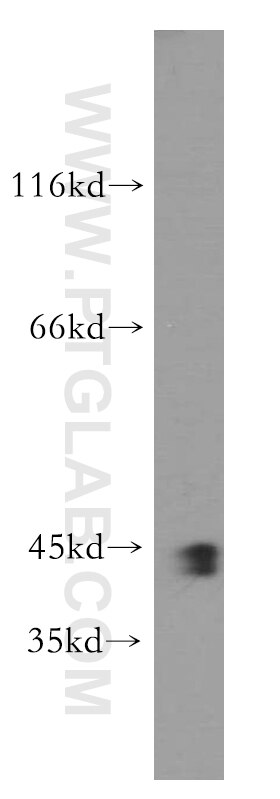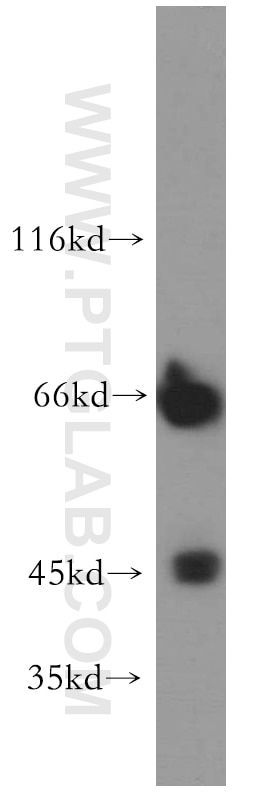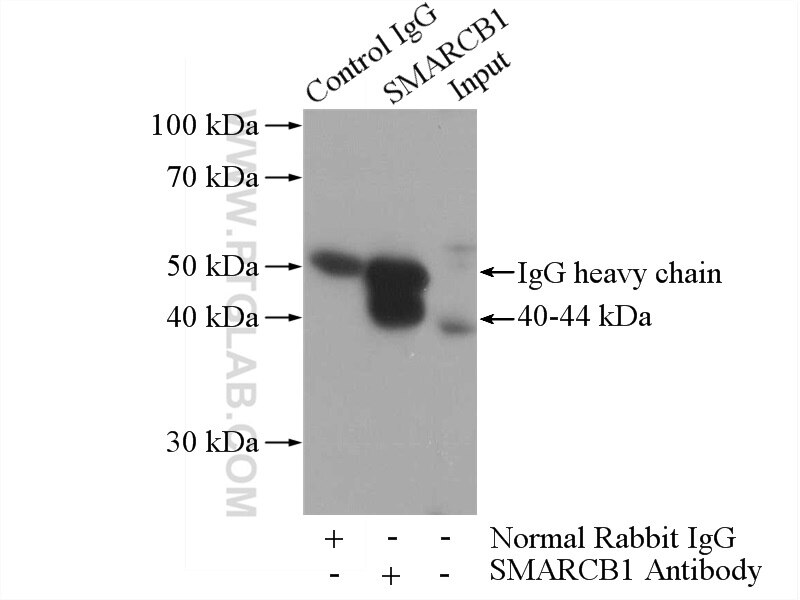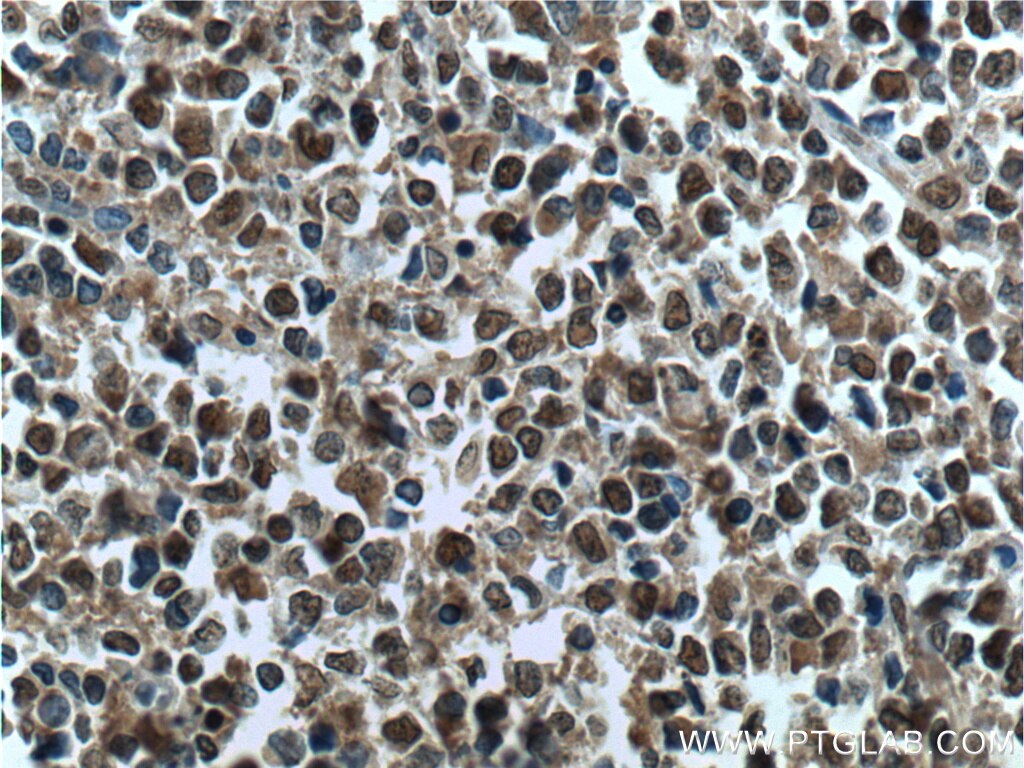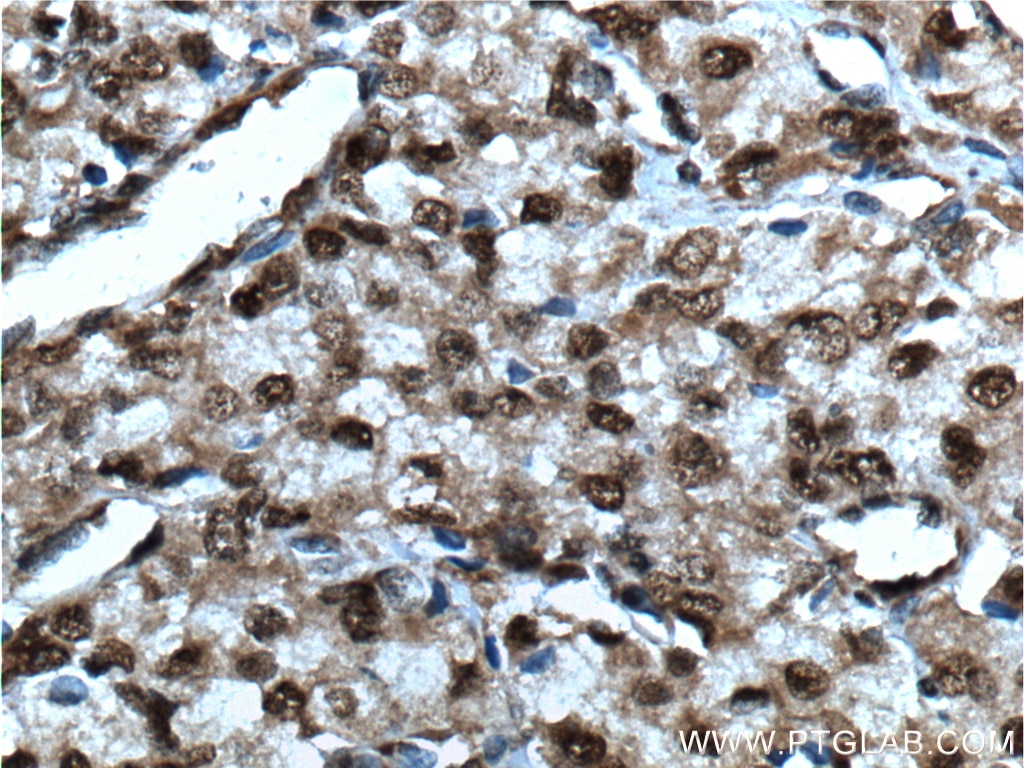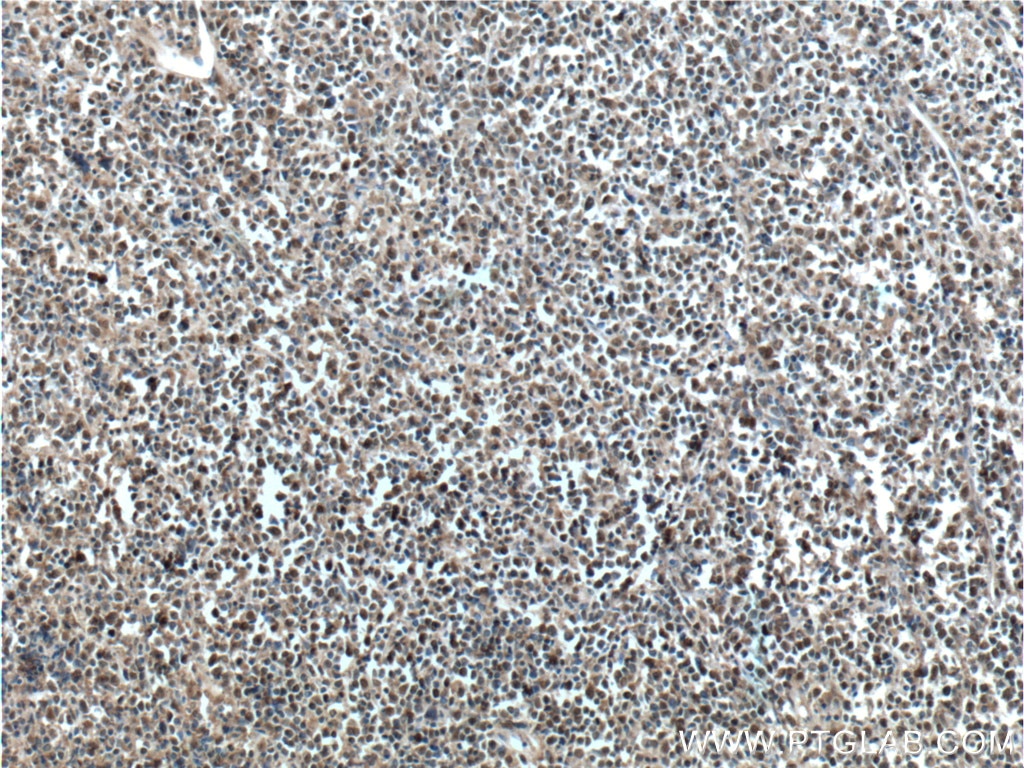- Featured Product
- KD/KO Validated
SMARCB1 Polyklonaler Antikörper
SMARCB1 Polyklonal Antikörper für IHC, IP, WB, ELISA
Wirt / Isotyp
Kaninchen / IgG
Getestete Reaktivität
human
Anwendung
WB, IP, IHC, IF, ELISA
Konjugation
Unkonjugiert
Kat-Nr. : 20654-1-AP
Synonyme
Galerie der Validierungsdaten
Geprüfte Anwendungen
| Erfolgreiche Detektion in WB | HepG2-Zellen, K-562-Zellen |
| Erfolgreiche IP | K-562-Zellen |
| Erfolgreiche Detektion in IHC | humanes Lymphomgewebe, humanes Prostatakarzinomgewebe Hinweis: Antigendemaskierung mit TE-Puffer pH 9,0 empfohlen. (*) Wahlweise kann die Antigendemaskierung auch mit Citratpuffer pH 6,0 erfolgen. |
Empfohlene Verdünnung
| Anwendung | Verdünnung |
|---|---|
| Western Blot (WB) | WB : 1:500-1:2000 |
| Immunpräzipitation (IP) | IP : 0.5-4.0 ug for 1.0-3.0 mg of total protein lysate |
| Immunhistochemie (IHC) | IHC : 1:20-1:200 |
| It is recommended that this reagent should be titrated in each testing system to obtain optimal results. | |
| Sample-dependent, check data in validation data gallery | |
Veröffentlichte Anwendungen
| KD/KO | See 2 publications below |
| WB | See 3 publications below |
| IF | See 1 publications below |
Produktinformation
20654-1-AP bindet in WB, IP, IHC, IF, ELISA SMARCB1 und zeigt Reaktivität mit human
| Getestete Reaktivität | human |
| In Publikationen genannte Reaktivität | human |
| Wirt / Isotyp | Kaninchen / IgG |
| Klonalität | Polyklonal |
| Typ | Antikörper |
| Immunogen | Peptid |
| Vollständiger Name | SWI/SNF related, matrix associated, actin dependent regulator of chromatin, subfamily b, member 1 |
| Berechnetes Molekulargewicht | 44 kDa |
| Beobachtetes Molekulargewicht | 40-45 kDa |
| GenBank-Zugangsnummer | NM_003073 |
| Gene symbol | SMARCB1 |
| Gene ID (NCBI) | 6598 |
| Konjugation | Unkonjugiert |
| Form | Liquid |
| Reinigungsmethode | Antigen-Affinitätsreinigung |
| Lagerungspuffer | PBS mit 0.02% Natriumazid und 50% Glycerin pH 7.3. |
| Lagerungsbedingungen | Bei -20°C lagern. Nach dem Versand ein Jahr lang stabil Aliquotieren ist bei -20oC Lagerung nicht notwendig. 20ul Größen enthalten 0,1% BSA. |
Hintergrundinformationen
SMARCB1, also named as BAF47, INI1 and SNF5L1, belongs to the SNF5 family. It is a core component of the BAF (hSWI/SNF) complex. The BAF complex is able to create a stable, altered form of chromatin that constrains fewer negative supercoils than normal. SMARCB1 stimulates in vitro the remodeling activity of SMARCA4/BRG1/BAF190A. It is involved in activation of CSF1 promoter. SMARCB1 belongs to the neural progenitors-specific chromatin remodeling complex (npBAF complex) and the neuron-specific chromatin remodeling complex (nBAF complex). During neural development a switch from a stem/progenitor to a post-mitotic chromatin remodeling mechanism occurs as neurons exit the cell cycle and become committed to their adult state. SMARCB1 plays a key role in cell-cycle control and causes cell cycle arrest in G0/G1. It is also involved in vitamin D-coupled transcription regulation via its association with the WINAC complex, a chromatin-remodeling complex recruited by vitamin D receptor (VDR), which is required for the ligand-bound VDR-mediated transrepression of the CYP27B1 gene. Defects in SMARCB1 are a cause of rhabdoid tumor (RDT) which also known as malignant rhabdoid tumor (MRT). Defects in SMARCB1 are a cause of schwannomatosis. The antibody is specific to SMARCB1.
Protokolle
| Produktspezifische Protokolle | |
|---|---|
| WB protocol for SMARCB1 antibody 20654-1-AP | Protokoll herunterladen |
| IHC protocol for SMARCB1 antibody 20654-1-AP | Protokoll herunterladen |
| IP protocol for SMARCB1 antibody 20654-1-AP | Protokoll herunterladen |
| Standard-Protokolle | |
|---|---|
| Klicken Sie hier, um unsere Standardprotokolle anzuzeigen |
Publikationen
| Species | Application | Title |
|---|---|---|
Nat Cell Biol Single-cell reconstruction of the adult human heart during heart failure and recovery reveals the cellular landscape underlying cardiac function. | ||
Front Cell Dev Biol Upregulation of Neogenin-1 by a CREB1-BAF47 Complex in Vascular Endothelial Cells is Implicated in Atherogenesis.
| ||
Transl Oncol SNF5, a core subunit of SWI/SNF complex, regulates melanoma cancer cell growth, metastasis, and immune escape in response to matrix stiffness. | ||
Bioengineered SNF5 promotes cell proliferation and immune evasion in non-small cell lung cancer.
|
